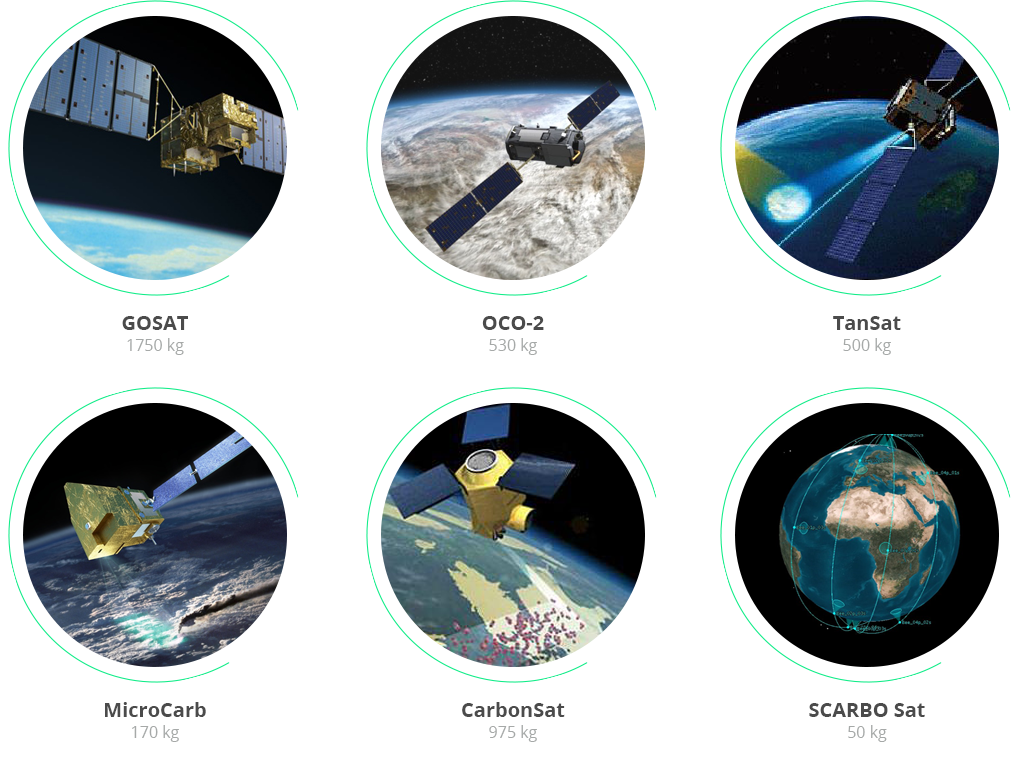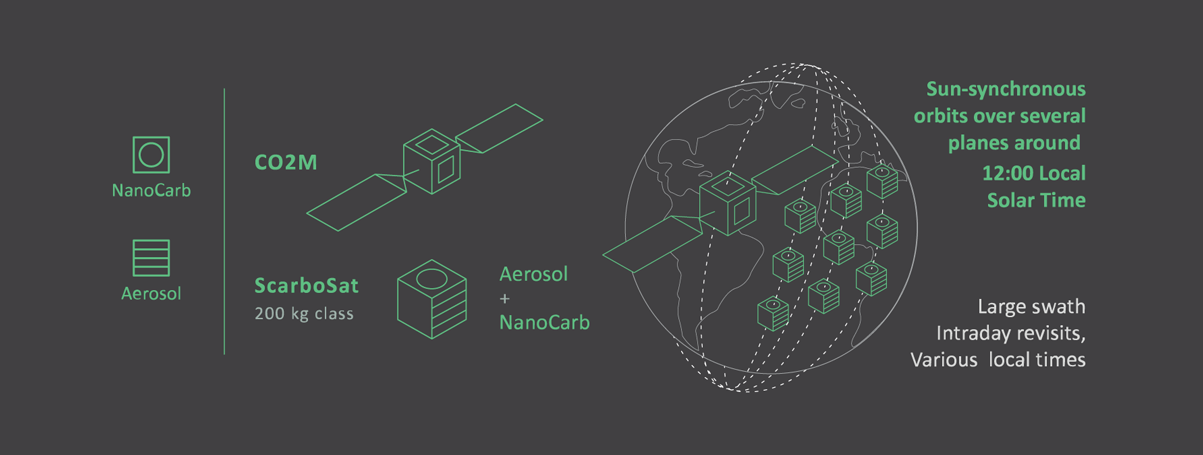The Horizon 2020 project SCARBO (Space CARBon Observatory), implemented by a consortium of 8 European organisations led by Airbus Defence and Space, kicked-off its activities in January 2018 and ran until December 2021.
The project aimed at solving a key challenge of anthropogenic greenhouse gases (GHGs) monitoring from space: improve the temporal revisit over the various sites of interest while meeting the accuracy and spatial resolution requirements (as per the EU guidelines on anthropogenic GHGs monitoring). This was envisaged by implementing a novel miniaturised static spectrometer concept on a constellation of small satellites, coupled with an aerosol sensor.
The challenge of the project was to overcome the current technological and economical roadblocks of existing GHG monitoring missions (measurement uncertainties due to aerosols, provision of both high accuracy measurements and high temporal frequency of GHG measurements within a reasonable cost envelope). SCARBO addressed both CO2 and CH4 species.
![]()
CONCEPT

Small Sats constellation
Novel miniaturised sensors
Aerosol sensors
![]()
SCOPE

Technical feasibility study
Assessment of mission performances
Proof of concept demonstration
Exploitation plan and use cases
![]()
CHALLENGES

High accuracy measurements
High observation frequency
High spatial resolution
Mission cost optimisation
The SCARBO approach
The SCARBO project foresaw the detailed design, analysis and modelling of a miniaturised GHG-monitoring spectro-imaging instrument, NanoCarb, which can fly on small satellite platforms. The entire mission architecture was based on specific user requirements, which drove the preliminary design of the instrument and size of the small sat constellation.
NanoCarb was complemented by an ultra-compact aerosol sensor in order to deliver high accuracy measurements.
The mission concept was based on a constellation of around 20 small satellites of the 200 kg class, providing intraday revisits worldwide, with a focus on hotspots above 1 ppm detection threshold.
- 200 kg class spacecraft, embarking:
- NanoCarb
- Aerosol Sensor
The overall measurement concept was experimentally validated through a dedicated airborne campaign with instrument prototypes.
Lastly, in addition to the technical analysis, the commercial perspectives of the SCARBO mission data products at global, regional and local scales was assessed by means of a market analysis.
This innovative concept promises the monitoring of anthropogenic CO2 and CH4 emissions from space while meeting the spatial resolution, temporal resolution, and accuracy requirements as per the EU GHG-specific documents and other state-of-the-art requirement sources. Moreover, the miniaturised sensors together with the use of small sats platforms led to a significant cost reduction in terms manufacturing and launch with respect to standard monolithic large spacecraft.
The team sees 2028-2030 as a realistic timeframe for SCARBO's operational implementation. It is important to consider that the Second Generation of the Copernicus Space Component, CO2M, could start flying as early as 2026, this is good timing for CO2M to be complemented by a constellation such as SCARBO.





